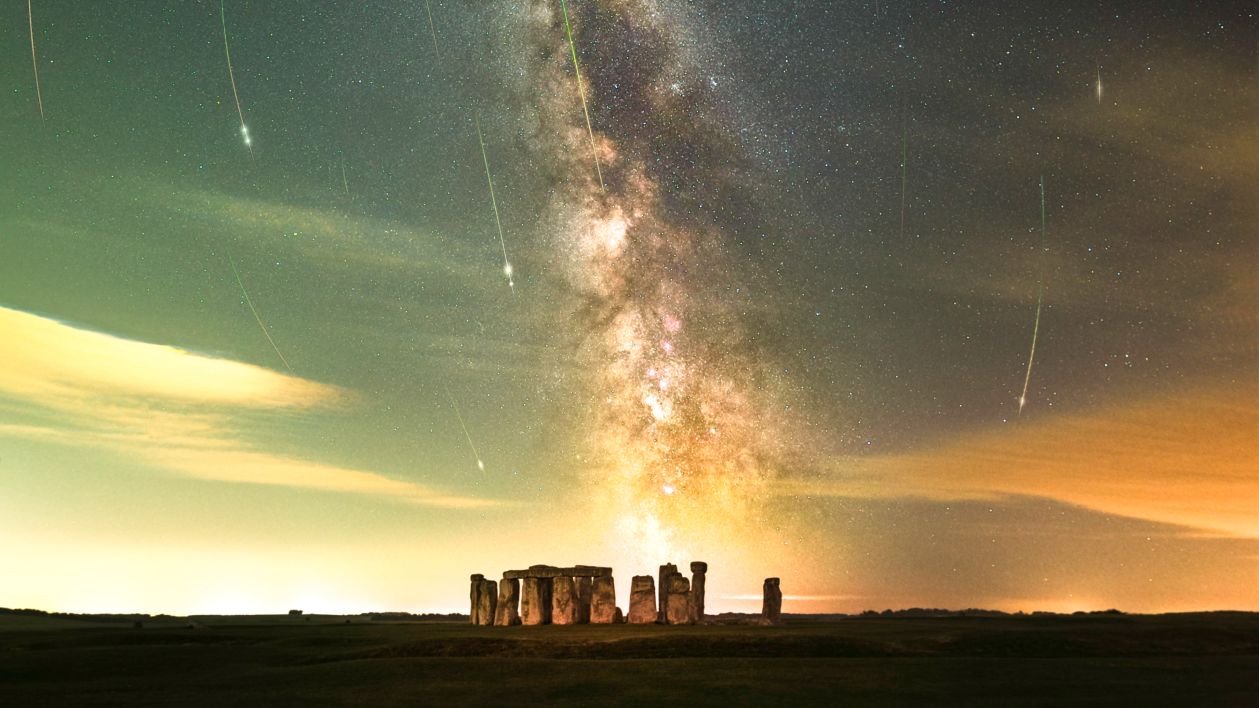The stunning core of the Milky Way will grace the night sky this week, providing a remarkable opportunity for stargazers. As the lunar disk wanes toward its new moon phase on July 24, 2023, observers can enjoy the spectacle of our galaxy arcing across the southwestern horizon. For the best experience, it is advisable to venture away from city lights to enjoy the full beauty of the cosmos.
Our solar system resides in the Milky Way, a massive spiral galaxy approximately 100,000 light-years across. Under clear, dark skies, the profile of this galactic home becomes visible as a glowing band of light, interspersed with vibrant clouds of cosmic material. The visibility of different sections of the Milky Way shifts with Earth’s annual orbit around the sun. During the summer months of July and August, viewers in the northern hemisphere can gaze directly towards the galaxy’s core. In winter, the outer spiral arms take center stage.
Those seeking to witness this celestial wonder should aim for locations with minimal light pollution. The arc of the Milky Way can be seen stretching from the constellation Cygnus through Aquila and down towards the southern horizon, passing near Sagittarius and the tail of Scorpius. The rich details of the galactic core are best appreciated in these dark sky locations.
Photography Tips for Capturing the Milky Way
To enhance the experience, award-winning astrophotographer Josh Dury offers insights on how to effectively capture images of the Milky Way. Dury emphasizes the importance of shooting from dark-sky locations, which not only provide greater contrast but also reveal the intricate details of the galaxy.
“When photographing the Milky Way, it is best to photograph its presence amongst the night sky from dark-sky locations,” Dury explained. “This results in a more vibrant and detailed appearance.” Observers should plan to head out a few hours after sunset, allowing at least half an hour for their eyes to adjust to the darkness.
He also encourages photographers to creatively incorporate the Milky Way into their compositions. “Think about the context of the image and how the inclusion of the Milky Way can enhance your subject matter,” he advised. It is important to let sufficient light into the camera while avoiding excessive ISO settings, which can lead to grainy images and blur finer details.
Those interested in further enhancing their astrophotography skills can refer to Dury’s recently published book, “52 Assignments: Night Photography,” which provides a wealth of tips and techniques tailored for night sky photography. The book is available for purchase through various online retailers.
Finding the Best Viewing Locations
For optimal viewing conditions, stargazers can utilize resources such as darksky.org to locate the best dark sky sites near them. By selecting an area far from artificial light, observers can fully experience the grandeur of the Milky Way.
As the nights surrounding the new moon approach, the Milky Way will shine particularly brightly. This natural light show offers a chance to connect with the universe and appreciate the ancient light of our galaxy. Whether photographing or simply admiring the view, this week presents a unique opportunity to witness the beauty of the cosmos.
Anyone who captures stunning images of the Milky Way is encouraged to share their photos. Submissions can be sent to [email protected], along with the photographer’s name and location.
With the right preparation and location, this week promises a breathtaking encounter with one of nature’s most magnificent displays.







































































